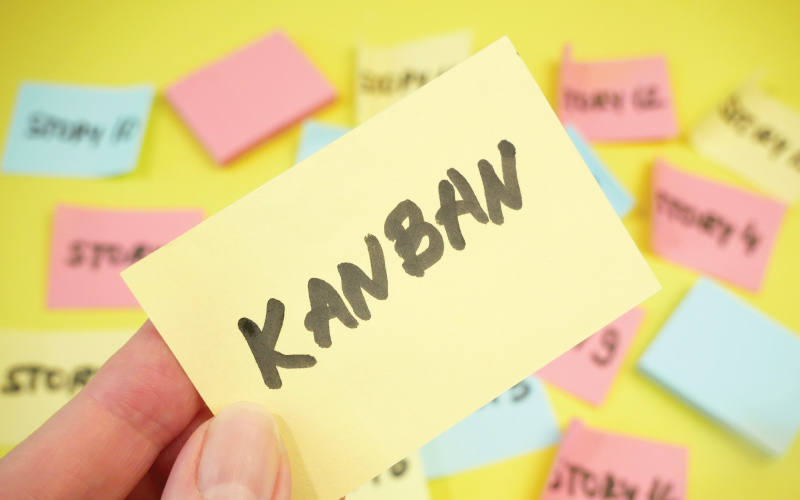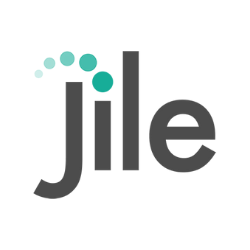The Ultimate Kanban 101: Methodology, Roles, Artifacts, and Values

Kanban - Overview
One of the most commonly used agile frameworks is kanban. It enables project managers and product managers to manage and monitor their initiatives effectively. Kanban was first used in manufacturing, and is currently the most effective workflow management technique for planning, directing, and enhancing knowledge work services. At the start of the twenty-first century, kanban software development teams were the ones who widely embraced the technique, and its acceptance and use have grown over time across a wide range of sectors.
Kanban Agile Methodology
The kanban agile methodology aims for continual improvement, task management flexibility, and improved workflow. The entire project's progress may be quickly and simply comprehended using this illustrative technique.
Just-in-time (JIT) manufacturing was utilized in manufacturing environments to employ kanban to manage inventory across the supply chain. The kanban methodology adopts the same idea by guaranteeing that the amount of work matches the team's capacity for work.
Principles of the Kanban Methodology
The following are the main kanban principles:
- Start with the current process: Kanban framework promotes making incremental, minor adjustments. As a result, the team should start with the current procedure and continually enhance it.
- Limit the current workload: The team must be aware of its limitations and set a WIP cap appropriately. Overcommitting will only result in time loss and a poor outcome for the project.
- Respect for current roles and responsibilities: One key factor in kanban's success is that it doesn't call for firms to change their workplace cultures entirely. Because they are uncomfortable with change, many businesses reject current approaches. With kanban, productivity is increased while remaining within the constraints of the current setup.
- Promote leadership at all levels: Project management approaches, like traditional techniques, require the project manager to approve even the simplest tasks. Kanban allows the person handling the job to make decisions on his own. It develops future leaders who continually learn from their errors and enhance their performance.
Practices of Kanban Methodology
Companies that employ the kanban methodology have developed the following procedures:
- Workflow visualization: A thorough project visualization is essential. The entire industry makes use of kanban board software for this. People used to purchase whiteboards on wheels in the past and use them with the aid of various columns and kanban cards. Due to the availability of sophisticated project management technologies that can greatly simplify your life, this strategy is now obsolete.
- WIP cap: WIP should be reduced according to the team's capacity when using a kanban system. WIP is frequently capped to guarantee optimal effectiveness. The number of jobs that can be completed simultaneously is constrained by the kanban board. The team must work together to complete all linked jobs at the same time because no new tasks can be pulled until the limit is reached.
- Effective workflow management: Project teams must minimize lead time, the total time required to accomplish a task, as much as feasible. Lead time is also measured together with cycle time.
- Explicit management policies: The project team must understand its goals. The explanation is straightforward: People will work harder to complete a project with a clear goal.
- Consider feedback: The client is ultimately the most significant stakeholder for every firm, and therefore, implementing a successful feedback system crucial. It is possible to designate a column on the kanban boards for customer or external reviewer feedback, and the standard of the output can be continuously upheld in this way.
Kanban Roles
Teams using the kanban method might play one of two key roles.
-
Service Delivery Manager (SDM)
Your workflow can be made more effective with the help of the Service Delivery Manager. It is not intended to be a substitute for the scrum master, despite certain parallels between the job. The SDM’s responsibilities should be an addition to a team member's existing responsibilities rather than a new job title.
The seven kanban cadences, which are various flow management sessions aimed at promoting evolution, are primarily related to the tasks of the Service Delivery Manager.
Your team must constantly monitor the effectiveness of their workflow and the flow of activities and initiatives across your Kanban board, whether or not there are Kanban cadences in place. If you choose to provide the Service Delivery Manager with a formal position within your business, you would typically be accountable for the following duties:- Monitoring the Kanban Board frequently to ensure that no work item is stopped for an excessive amount of time.
- Talk to the task's owner if a task is taking longer than normal to complete. Assist if there are any issues or dangers of any kind.
- Verify that the team members are adhering to the policies. This may be akin to a watchdog, but it is frequently important, especially with teams new to Kanban.
-
Service Request Manager
Another unnoticed Kanban role that can be added as a bonus to a team member is the Service Request Manager. Given that they are in charge of understanding the needs and expectations of the clients, they perform similar duties to those of the Scrum Product Owner.
An SRM's main objective needs to be to act as a risk manager as well as a facilitator. It is related to the following in terms of practical responsibilities:- Facilitating the prioritization of pending work by sorting backlog items into order
- Assuming responsibility for the system's policies that frame decisions
- Enhancing corporate governance, ensuring consistency in the processes, and lowering the risk to workers connected to a single person
Kanban Artifacts

"Kanban Board" is one of the key factors in Kanban's growth in popularity. Utilizing the Kanban method, we create a visual board to show the project's progress in three straightforward phases, i.e.
- To do
- In-Progress
- Completed
A standard Kanban board layout includes:
-
Lists (progress-tracking columns):
The columns which are included on the main board are lists. Each column represents a distinct process phase. A "Workflow" is made up of these actions collectively. Up to the final stage, "Done/Completion," each card maintains the flow. Any Kanban process can be as straightforward as "To Do," "In Progress," and "Complete." -
Cards (Things used to indicate tasks):
The Kanban board's visual cards and signals are what set it apart the most (tickets, stickies, screenshots). Typically, the Kanban team will write one work item per card. The Project Manager makes sure that the board is updated as the team begins working, and visual cards help coworkers understand what the group is working on and what is finished. -
Work in progress (WIP) limitations:
As the name suggests, "WIP limits" are used to set a cap on projects that are currently being worked on. It represents the highest number of cards that may ever be visible in a single column. For instance, if a column has a five-card WIP limit, that column is only allowed to have five cards. The workflow is controlled by these WIP restrictions, which also serve as an early warning system when you've taken on too much work. -
Commitment point
The board of Kanban teams frequently has a backlog. The backlog is nothing more than a column where clients and coworkers submit their suggestions for projects that the group can choose from and use to create their to-do lists. The team commits to a task at the time when a concept is chosen, and work on that specific task begins. -
Delivery point
In a Kanban team's process, the delivery point comes last. The moment the customer receives the service, piece of software, or other item is known as this. In order to deliver cards as soon as possible, the team's objective is to pick up cards as soon as possible at the commitment point.
Kanban Values
-
Transparency
Transparency is created in all domains via an unrestricted exchange of data and precise, unambiguous terminology. -
Equilibrium
Being effective means striking a balance between each member's various needs, opinions, and skills. -
Teamwork
Collaboration among team members is enhanced by the Kanban method. Collaboration is consequently a fundamental component of it. -
The client
All parties involved in the business naturally have their interests focused on the clients and the value they obtain. -
Productivity
Work symbolizes a constant or sporadic flow of values, and recognizing and sustaining such a workflow is a crucial first step in the use of Kanban. -
Leadership
At all levels, leadership is necessary to create value and produce a better state. -
Understanding
For a company to advance, understanding first and foremost requires self-awareness on the part of each employee. The improvement involves change, which calls for understanding, and Kanban is a way of transformation.
You establish cause and effect when you have located a specific issue. Accordingly, to enhance your work, you must first have a thorough understanding of the procedures involved. Start by examining what you're doing and the reasons why you're doing it. -
Agreement
In a contract, each party stipulates the joint pursuit of objectives. Diverse viewpoints and strategies must be recognized, and these many viewpoints ought to converge. This reconciliation results from the parties' shared commitment to enhance the procedures required for achieving the goals together. -
Respect
The other values are built on respect for individuals, expressed through appreciation, understanding, and consideration: Consider what you are now doing and how it satisfies or fails to satisfy the demands of those both inside and outside the organization.
These principles serve as the driving force for Kanban's constant pursuit of teamwork and service quality improvement. You can implement the Kanban approach if you agree with these nine values.
The Kanban Agenda
According to Kanban, three agendas for change are essential for an organization to succeed:
Sustainability agenda:
Finding a sustainable work pace and maximizing attention inside the business are the goals of the sustainability agenda. It aims to develop services that balance demand and current performance. The amount of work assigned to employees increases when demand outpaces performance.
Bring in transparency regarding the workload and balance it with employees' performance. Doing this establishes a foundation that encourages all employees to finish their work at a normal pace and avoid overworking themselves.
Service orientation agenda:
It addresses the effectiveness of the business and client happiness. It starts with the true goal of the business and focuses on the customers. Kanban focuses on providing services while enhancing them over time.
The Service Orientation Agenda's objective is to offer clients services that support the business's mission. In contrast, they ought to fulfill or even beyond the demands and expectations of the clients. The business produces fantastic outcomes when all parties involved concentrate on this.
The survivability agenda:
It emphasizes maintaining adaptability and competitiveness. It discusses the company's future. Its goal is to guarantee that it endures and succeeds during periods of considerable change.
Current adequate technologies and procedures must be modified to accommodate ongoing change. Kanban is well suited to handle these difficulties because of its evolutionary approach to change.
Conclusion
The values and guiding principles of the Kanban technique can be used as a management tool, and your company can fully implement it. To begin the process of evolutionary transformation, however, you can also utilize Kanban only at the level of individual small teams.
Thanks for subscribing to our latest blogs, thought leadership and other product updates!
Read our Privacy Notice to know more. You can opt-out of all communications anytime.
